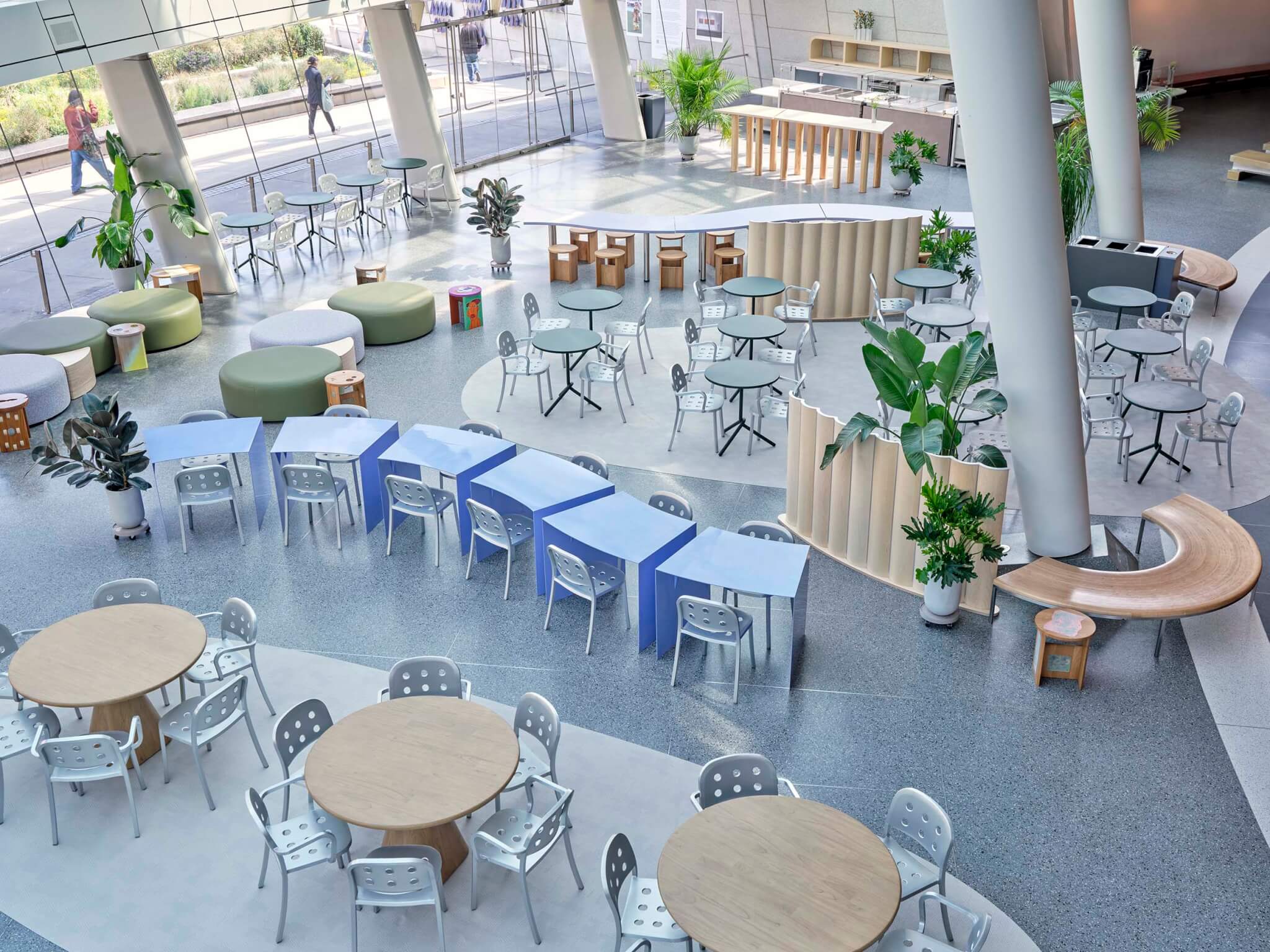Before Ennead’s glass extension and steps-cum-seating were added to Brooklyn Museum’s neoclassical facade, a central staircase ushered patrons into the McKim, Mead & White–designed edifice. The renovation effectively turned the front of the museum into a plaza ripe for public recreation.
More recently, a project by Office of Tangible Space inserted a new cafe into the museum’s glass pavilion, further activating its main entrance. For Brooklyn Museum’s new cafe, Office of Tangible Space was guided by seven principles: it had to be welcoming to all, as well as playful, simple, memorable, and other qualities.
“The space embodies the playfulness, creativity, craft, and expression that make Brooklyn and Brooklynites so unique,” the firm shared in a project description.
The angled windows and exposed roof structure of Ennead’s glass pavilion from 2005 flood natural light into the interiors, which remain airy. Now, this space has been simply furnished.
Bespoke Solutions
The dining venue’s layout was meant to evoke “islands and streams,” designers said. Toward that end, an array of seating options were strewn throughout the space, and an arrangement of tables were positioned into undulating shapes that recall streams. On the floor organic-shaped “islands” form a ground of sorts for sets of circular tables.
Lining the perimeter of the cafe are rounded ottomans from Knoll. Office of Tangible Space designed a number of the furniture pieces for the cafe, including metal tables and wood elements.


An art- and community-centered contribution to the cafe are ten stools decorated by artists with connections to Brooklyn. The pieces were commissioned by the Brooklyn Museum and Office of Tangible Space.
Each stool features a unique design, some are simply painted, while others don fabrics, textured additions, carved elements, and mosaic tiles. The contributing artists include Cody Hoyt, Vincent Jackson, Minjae Kim, Emma Kohlmann, Gracelee Lawrence, Kim Mupangilaï, Sarah Nsikak, Ellen Pong, Allan Wexler, Chen Chen, and Kai Williams.

“These handcrafted pieces not only complement the cafe’s design but also echo the philosophy that food, like art, is an immersive experience—engaging the senses, sparking conversation, and creating a connection between the creator and the audience,” the firm shared.

Culture and Community
To design the cafe’s kitchen and food display case, Office of Tangible Space opted for an industrial look that meshes well with the existing architecture. The counter was wrapped in a textured upholstery and topped with glass screens that separate hungry museum patrons from the containers of a simple fare of pastries, baked goods, sandwiches, soups, salads from restaurateur André Hueston Mack and Brooklyn-based Parlor Coffee.
Office of Tangible Space describes its ethos as being “rooted in maintaining a connection to culture and community.” With the Brooklyn Museum cafe, that firm has done exactly that by centering the work of local artists and delivering a dining space that offers comfort and enjoyment for all.

The cafe’s opening coincides with the Brooklyn Museum’s 200th-anniversary celebration and unveiling of a new graphic identity that pays homage to the building’s architecture.

